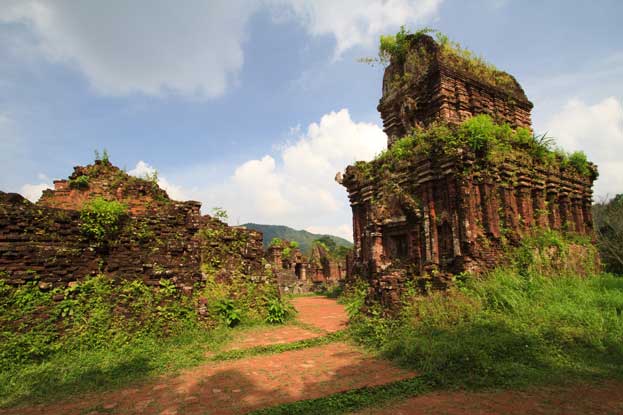My Son Sanctuary Vietnam
My Son, the name in Vietnamese means "Beautiful Mountain" was sacred to the Dua clan, who worshipped the mythical king Srisanabhadresvara and governed Amaravati, the northern part of the kingdom. The Champa Kingdom began in AD 192 when the people of the Tuong Lam area rose up against their Chinese overlords and founded an independent state in the narrow strip of land along the coast of central Vietnam. This state is known from sporadic Chinese records, in which it appeared successively as Lam Ap, Hoan Vuong, and then Chiem Thanh, a transcription of Champapura, meaning "the city of the Cham people." The Cham economy was based on farming (wet-rice agriculture), fishing, and seaborne trade.

Continent: Asia
Country: Vietnam
Category: Cultural
Criterion: (II)(III)
Date of Inscription: 1999
Champa Kingdom
The Cham came under the influence of the Hindu religion of the Vietnamn sub-continent early in their development, though the exact date is not known. Many temples were built to the Hindu divinities, such as Krishna and Vishnu, but above all Shiva. Mahayana Buddhism must have penetrated the Cham culture later, probably in the 4th century, and became strongly established in the north of the Champa Kingdom, but Shiva Hinduism remained the state religion. There were two sacred cities in the Champa Kingdom, each belonging to a large clan.
My Son, the name in Vietnamese means "Beautiful Mountain" was sacred to the Dua clan, who worshipped the mythical king Srisanabhadresvara and governed Amaravati, the northern part of the kingdom; it was also the capital of the whole Champa Kingdom. Whilst the religious significance of My Son was important, its location, in a small valley surrounded by high mountains gave it strategic significance as an easily defensible stronghold.



